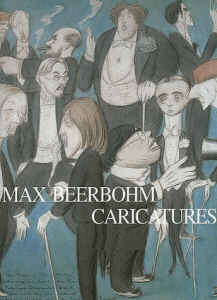^
Died on 20 May 1965: Charles Camoin,
French Fauvist
painter born on 23 September 1879. — [C'est Camoin qu'a moins de quoi?
— De ses oeuvres dignement représentées dans l'internet.
Je ne trouve que quelques images pas beaucoup plus grandes que des timbres-poste.].
Et penser qu'il aurait suffit d'intervertir son nid et son eau pour qu'il
soit un camion!]
— After the death of his father, Charles was brought up by his mother
alone, whose endless travels seem to have affected his studies. At 16 he
simultaneously enrolled at the Ecole des Beaux-Arts, Marseille, which he
attended in the morning, and at the Ecole de Commerce. After winning a prize
for drawing, he was encouraged by his mother to enter Gustave Moreau’s studio
at the Ecole des Beaux-Arts in Paris, which he did in May 1898, shortly
before Moreau’s death. Although he barely had time to derive any benefit
from Moreau’s teaching, he formed several lasting friendships among fellow
students later associated with Fauvism: Manguin, Puy, Rouault, Matisse,
and especially Marquet
[27 Mar 1875 – 13 Jun 1947], with whose work his own shows marked
affinities.
— Charles Camoin loses his father at an early age. It is thus his
mother who enrolls him at the Beaux-Arts de Paris where he establishes an
undying friendship with Henri Matisse and Alber Marquet. Charles Camoin
spends his childhood between Paris, Nice, Cannes, Marseilles, southern towns
which exert an irresistible attraction on him. During his military service,
for which he's transferred to Aix-en-Provence, the young man provokes a
meeting with Cezanne, with whom he will correspond actively up until the
latter's death. Beginning in 1903, Charles Camoin exhibits at the Independent's
then at the Fall Salon, namely at the 1905 Salon where "Fauvism" breaks
out. Quickly recognized, Charles Camoin abandons fauvism in favor of a more
gentle painting and avoids the major intellectual and artistic movements
of his time such as Dadaism and Cubism. Following the rupture caused by
the First World War and after his marriage in 1920, Charles Camoin divides
his time between Paris and Saint-Tropez, whose port he loves to paint, simplifying
the contours and playing with light. Charles Camoin dies in Paris at the
age of 86 but he is buried under his native skies in Marseilles.
— Camoin was born in Marseilles and met Matisse in Gustave Moreau's
class at the Ecole des Beaux Arts in Paris. Matisse and his friends (including
Camoin, Henri Manguin, Albert Marquet, and and Georges Rouault), joined
by André Derain and Maurice de Vlaminck, two close friends then sharing
a studio, and slightly after by Braque, Dufy, and Kees van Dongen, formed
the original group mockingly labelled the Fauves (the wild beasts) for their
wild, expressionist use of color and their general refusal to paint like
anyone else then showing at the salons. Camoin always remained close to
Matisse, whose portrait he painted and which is in the permanent collection
of the Pompidou Museum in Paris, but he also came to admire Cezanne, Renoir,
and Bonnard. His work has been shown widely in France and is in such major
collections as the Musee d'Art Moderne de la ville de Paris and the Petit
Palace (also in Paris) in addition the the Pompidou and many of the French
regional museums. In 1955 he was awaarded the Prix du President de la Rupublique
at the Biennale of Menton.
—
LINKS
— Voiliers
à Ploumanach aka Marine (1931, 33x46cm) _ Ce voilier devant
l'un des célèbres rochers de granit rose de Ploumanach, appelé en raison
de sa forme "le chapeau de Napoléon" a été peint lors du séjour de Charles
Camoin chez ses amis Eiffel. Suivant une touche légère et fluide, Camoin
joue avec dextérité et liberté des effets colorés et lumineux, animant cette
paisible "marine" de quelques taches et coups de pinceau. Elle apparaît
plus "méditerranéenne" que "bretonne" et montre que le peintre, profondément
marqué par la lumière du midi, n'a pu, à l'occasion de ses trop courts séjours
en Bretagne, prendre en compte les caractères particuliers des paysages
et de la lumière.
— Cargo
à Saint-Tropez (80x122cm) _ Dividing his time between
Paris and Provence, namely Saint-Tropez, Charles Camoin paints not only
portraits but also views, bouquets, and countless marine landscapes. Nobody
could define his interests better than the painter himself. "I still consider
myself a Fauve. there are two kinds of colors, real ones and superficial
ones. You have to choose. I think you must deal with the real ones and it's
what I've done since the outset".
— Nature
Morte aux Tomates (26x41cm, 363x624pix, 30kb) — Nature Morte aux
Zinias (525x655pix, 34kb)
— Portrait
(26x21cm, 591x432pix, 72kb) — Rue
de Montmartre (14x18cm, 432x553pix, 63kb) |
 Died
on 20 May 1956: Sir Henry Maximilian
Beerbohm
Died
on 20 May 1956: Sir Henry Maximilian
Beerbohm